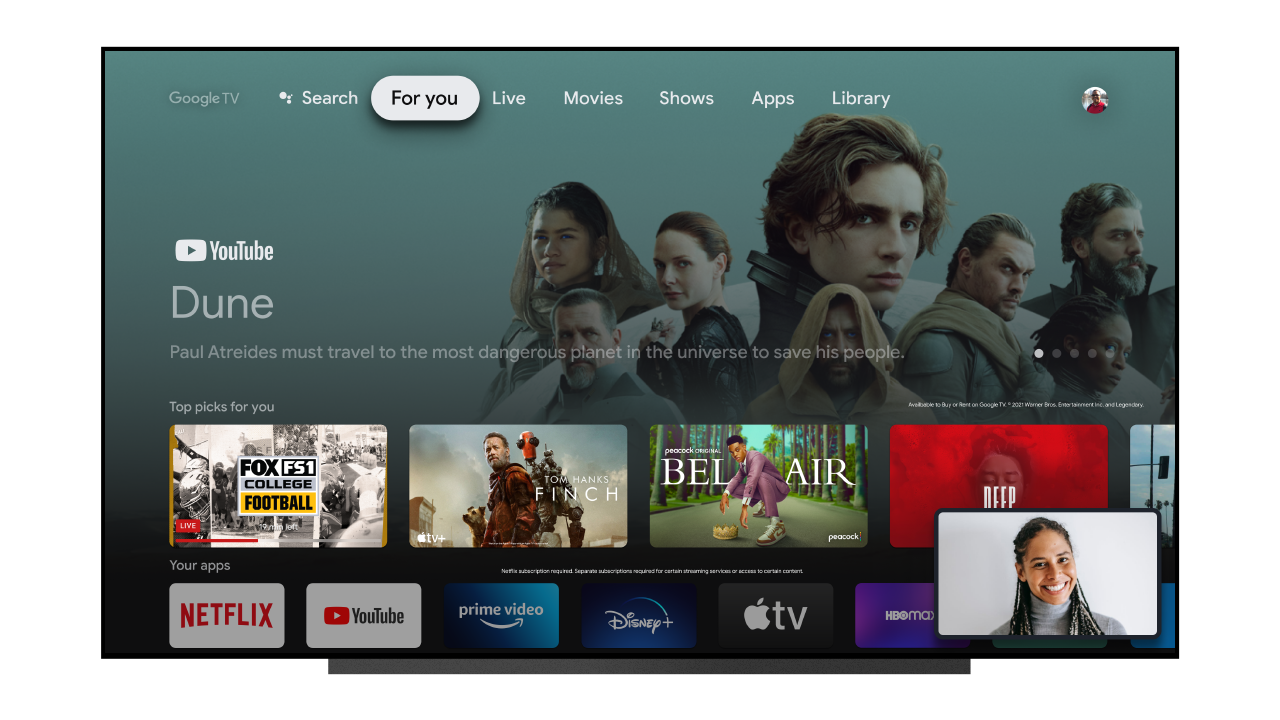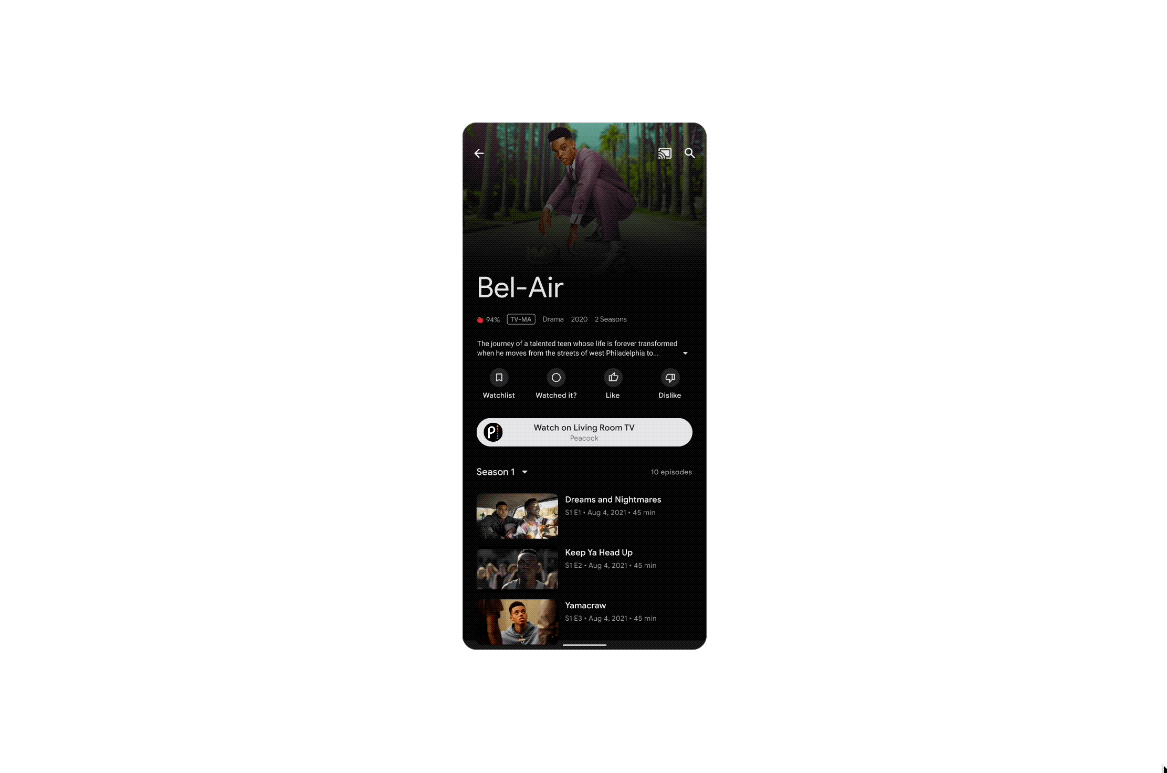Following last year’s remodeling of the Google TV app with features such as movie and TV recommendations, critic scores, and more, the company is today at the Google I / O Developers Conference to allow users to cast TV later this year. Announced that it will be. Send shows and movies directly from your Android phone or tablet to your TV. The company also introduced new Android OS developer tools, providing updated metrics related to the expanding footprint of Android OS.
Google has been working on a review of the Connected TV experience and companion apps since 2020, when it first introduced the new Google TV interface for Chromecast streaming devices. We also applied the Google TV name to an app that was formerly known as the Google Play Movies & TV app. Earlier this year, Google also removed the “Movies & TV” section from the Play Store. Keep in mind that the Google TV app will be a centralized place to buy, rent and watch movies and TV shows on your mobile device.
The company hasn’t provided additional details about plans to add cast support to the app, and said they would approach launch. However, a photo provided by Google shows that at least one of the supported apps is NBCU’s Peacock.
Image credit: Google
As part of the announcement, the company also provided several updates to the Android TV ecosystem, noting that Android TV OS, including Google TV, has 110 million monthly active devices. This is an increase from 80 million monthly active devices announced by Google at last year’s Google I / O event.
It also states that Android TV OS currently offers over 10,000 apps.
Of course, the Android TV OS isn’t directly equivalent to something like Roku or Amazon Fire TV, as it’s not only used on the company’s own devices such as Chromecast. Instead, Google’s strategy is to license the platform to partners, including TV OEMs and pay TV operators around the world. According to Google, there are currently more than 300 partners using the platform, seven of which are seven of the ten largest TV OEMs.
However, Google’s 110 million active device numbers cannot be directly compared to the metrics shared by rival Roku and Amazon.
Android TV OS numbers are actually calculated by counting the number of devices actively used in a month. This means that users with multiple devices can count those devices individually, but families that are viewed by multiple people on one device are counted once.
Roku and Amazon define a monthly active user as the “account” that was active that month. This means that even if the account is streamed to multiple different devices during the period, it will only be counted once. If Roku or Amazon calculate active devices like Google, those numbers will be higher.
In December 2020, Amazon announced that Fire TV had more than 50 million monthly active users. This number is still referenced on the Amazon Ads website. In January of this year, Amazon also mentioned that it sold more than 150 million Fire TV devices to further align its metrics with Google’s device claims. Meanwhile, Roku said it ended in 2021 with 60.1 million active accounts. In the first quarter of 2022, we updated that number to 61.3 million accounts. Active devices are not counted.

Image credit: Google
Google also highlighted some Android 13 developer features and tools related to the Android TV initiative. According to Google, the tools focus on performance and quality, accessibility and multitasking, including:
- AudioManager: This allows the app to predict audio routes and accurately understand the available playback modes.
- MediaSession: Integration with the app allows Android TV to react to HDMI state changes, save power and pause content.
- InputDevice API: Added support for various keyboard layouts. (Added support for various layouts of physical keyboards such as the QWERTZ and AZERTY keyboards for game developers.)
- System-wide accessibility settings: Allows users to enable voice guidance between apps.
- Picture-in-picture (PIP) API: The TV’s PIP supports an extended mode to display videos from group calls and a docking mode to avoid overlaying content on other apps.
- Maintain a clear API: Prevent overlays from hiding important content in full-screen apps.
The picture-in-picture API is particularly interesting because it allows for more co-viewing capabilities across the Android TV ecosystem, following Apple’s introduction of SharePlay, which enables co-viewing via FaceTime across platforms, including Apple TV. Thing.


Commentaires
Enregistrer un commentaire